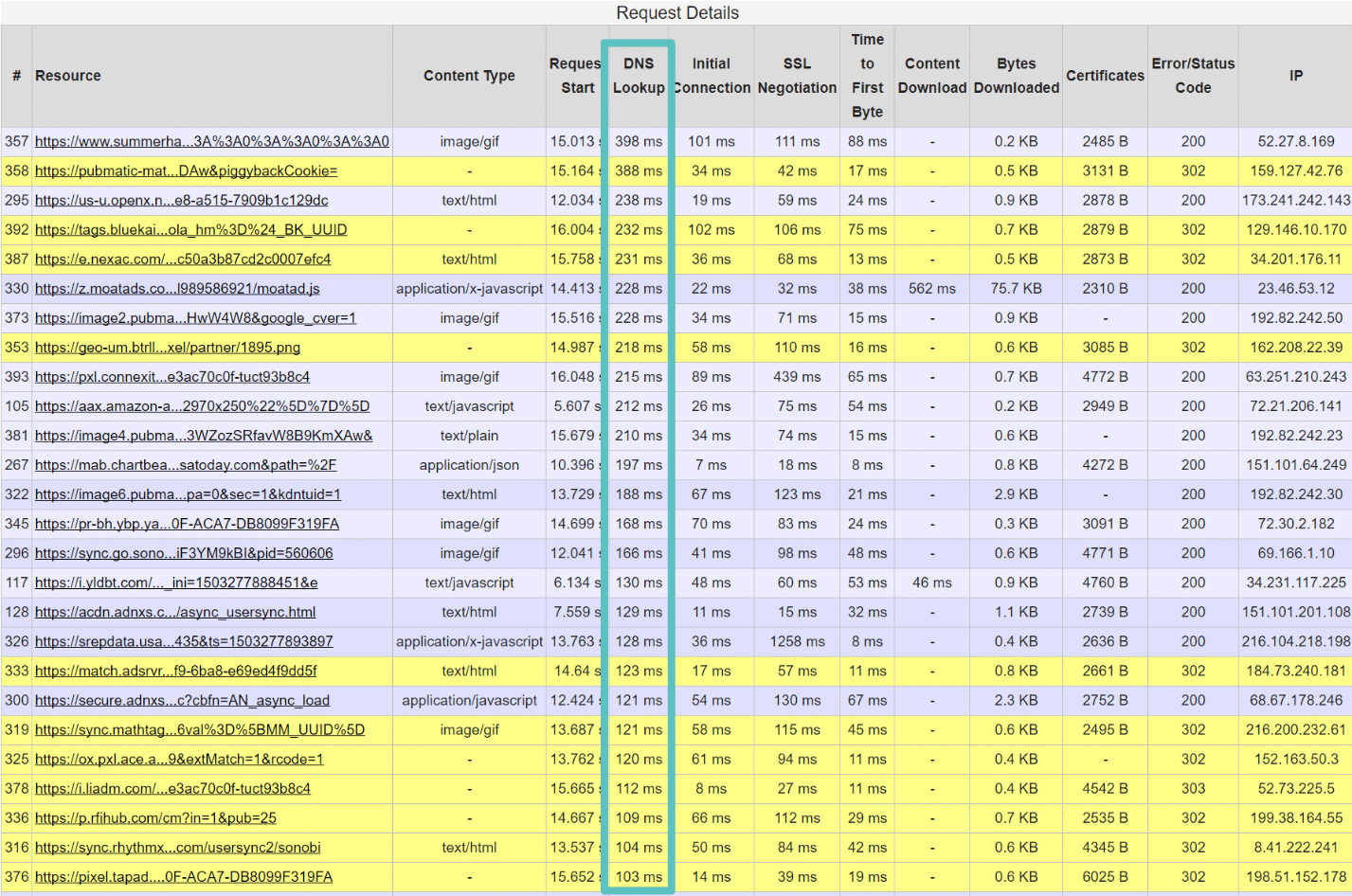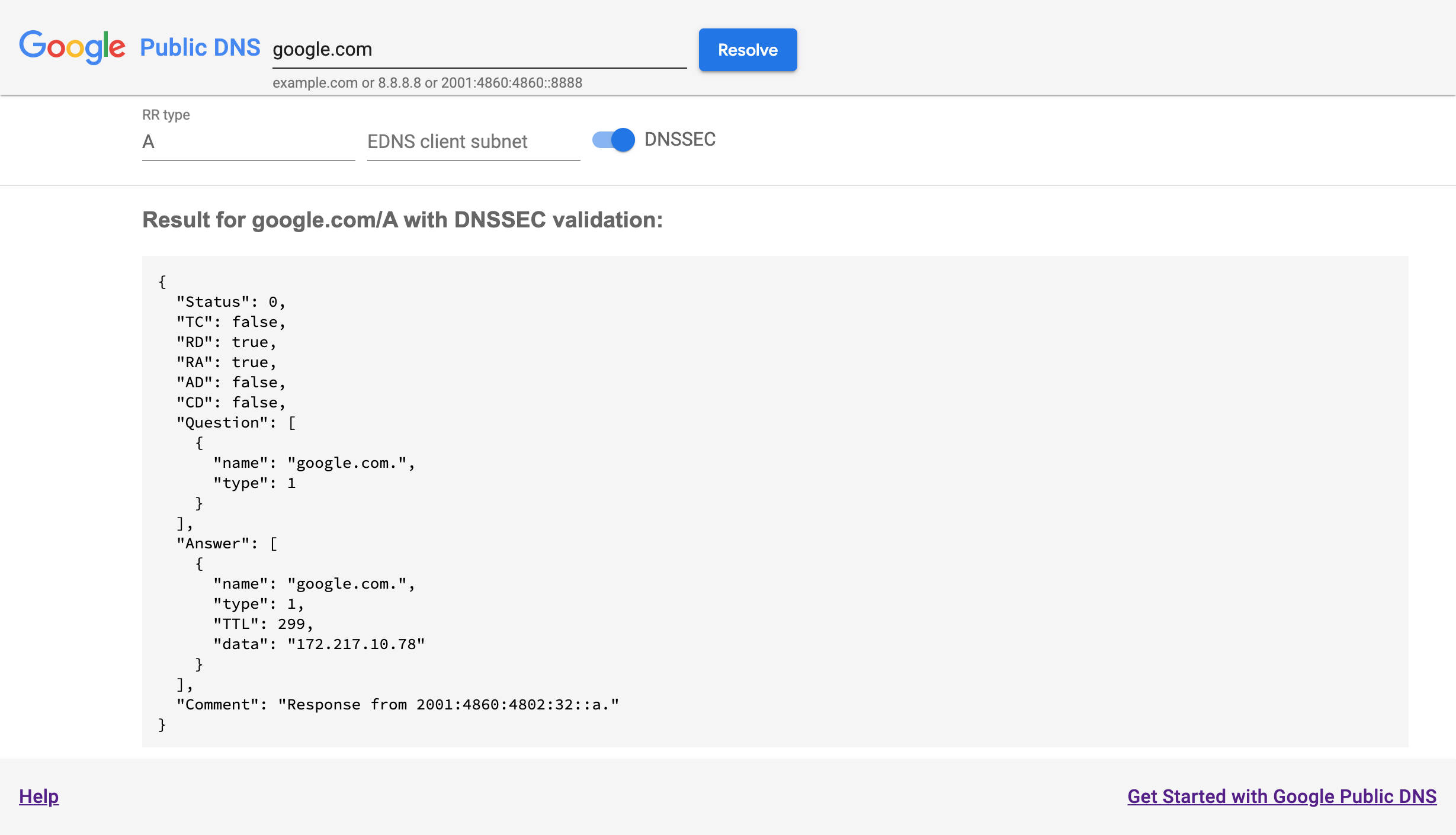About DNS-Lookup
DNS Lookup is an online tool that will find the IP address and perform a deep DNS lookup of any URL, providing in-depth details on common record types, like A, MX, NS, SOA, and TXT.
DNS lookup is used to view DNS records of a certain website. Enter a domain name and press “Start”. Then you will get the full report. Check your DNS records before website launch or website migration. DNS Propagation Checker is of great help when changing your DNS name from your register. This DNS Checker tool offers the current DNS lookup against your IP address after making changes to your domain’s records. It will notify you whether the DNS is propagated worldwide or not. How much time do DNS changes take and how do I speed it up?
Directly type or copy and paste a URL (with or without http/https) in the form field above, click 'Lookup,' and learn the IP address and DNS information for that particular URL.

Domain DNS Health Checker Tool Find issues, warnings and complete information (standard procedures and best practices) regarding your domain's DNS. Also check your website's A record and MX record IP in blacklists. This tool offers complete DNS health checkup for your domain. If the DNS Records tool doesn’t indicate any problems but you’re still seeing issues, using the NsLookup to point to a different server may return helpful details. NsLookup also lets you check to see if multiple servers are reporting consistent and up-to-date information. This utility is a GUI alternative to the NSLookup tool that comes with Windows operating system. It allows you to easily retrieve the DNS records (MX, NS, A, SOA) of the specified domains.
What is DNS?
Domain Name System, or DNS for short, is the protocol that translates readable URLs - dns-lookup.com - into numeric addresses that can be understood by computers. This is how DNS works:
- A web user enters a readable domain name of a website into the address bar of their preferred browser.
- Their device then sends a DNS request to the ISP (Internet Service Provider) of the user.
- The ISP will determine if the domain name is associated with an IP address.
- When the IP address is located, the domain name is sent back to the device of the user.
- The device can now communicate with the server of the entered domain, and the user can now view the website.
What are the Most Common Types of DNS Records?
- A (Address) - Used to point a domain name to the associated IP address.
- CNAME (Canonical Name) - Used for creating aliases of domain names.
- MX (Mail Exchanger) - Used to deliver email to a specified address.
- NS (Name Server) - Used to specify an authoritative name server for a given host.
- SOA (Start of Authority) - Used to determine key information about a DNS zone.
- TXT - Used to verify domain ownership and hold SPF (Sender Policy Framework) data.
Credits & Source
Built and maintained by CircleCell. You can grab the DNS-Lookup.com source code from GitHub here.
What is DNS?
The DNS resolves your domain name to an IP address. It’s like a street sign pointing to your website, email, and proxy servers. Without it, your users can’t find you.
From A to TXT
Monitor your key DNS records such as A, AAAA, SOA, TXT, MX, and root server to know when someone tampers with your DNS, and stop a DNS poisoning in its tracks.
Test worldwide
Just because your DNS works properly on one server, it may not work from all. Our checkpoints catch regional problems before they can spread to the entire DNS network.
Check serial numbers

The SOA serial number is incremented when a DNS entry changes. Monitoring the serial number catches changes you may not notice if you’re only monitoring your A or AAAA records.
That’s a lot of info! Share it
Your DNS records are loaded with sharable information, so share it. Click the button to get a link to your test result. Send the link out to your team or access the test later.
IPv4 and IPv6
The move to IPv6 is on. Nearly half of our 226 checkpoints support IPv6 natively. Check your A record or AAAA record; No matter which IP version you’re running, we’ve got your back.
“We are able to act very quickly; our average time to respond to outages has gone down.”
/https%3A%2F%2Fi1.wp.com%2Ftechsalsa.com%2Fwp-content%2Fuploads%2F2012%2F06%2Ff-secure-dns-check.jpg)

Dns Tools Windows 10
Website Uptime Monitoring
Dns Reporting Tools
Monitor from 226 worldwide locations and get alerts via email, SMS, and integrations such as Slack when something breaks.
Web Application Monitoring
With Web Application Monitoring, you can monitor website steps such as shopping carts, logins, search, and forms.
Web Performance Monitoring
Improve your website speed with rich, easy-to-use waterfall reports, monitor in Chrome, Firefox, and Internet Explorer.
API Monitoring
APIs fuel all kinds of tools and applications. Build multi-step API calls to test your APIs for functionality, performance, and uptime.
Real User Monitoring
How do your actual users see your site? RUM gives you load times per browser, device, and operating system displayed in shiny world maps.
Server Monitoring
Make sure to check the backend too. Check your web, DNS, and mail servers worldwide from outside your firewall.
Ready to engage?
Test the Uptrends monitoring platform (Uptrends Synthetics, RUM, and Infra) free for 30 days. Your full-featured trial expires automatically, and we don’t need your credit card.